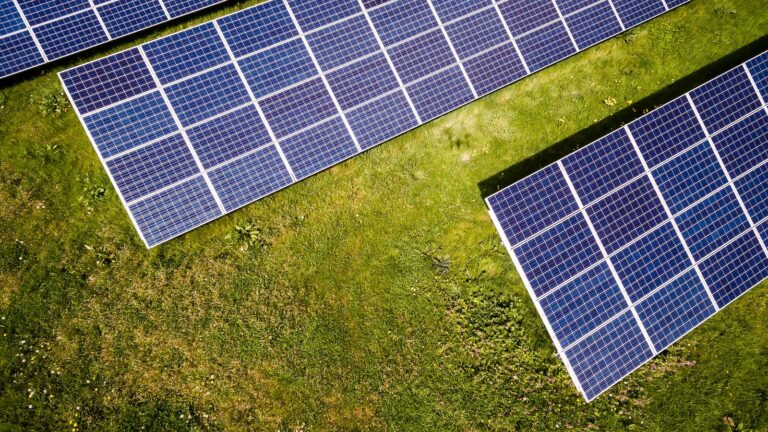Lawn Aeration Tips and Tricks from the Experts

Welcome to our blog post on lawn aeration tips and tricks from the experts! Is your grass looking dull, patchy, or lifeless? Perhaps it’s time for some much-needed TLC. Aeration is a crucial process that involves creating tiny holes in your lawn to help it breathe and absorb essential nutrients more efficiently.
Whether you’re a seasoned gardener or a novice green thumb, this article will provide you with informative insights into proper lawn aerating techniques and share valuable tips from experienced professionals to achieve that lush, healthy-looking yard you’ve always dreamed of. So grab a cup of tea, sit back comfortably, and let’s delve into the fascinating world of lawn care together!
What is Lawn Aeration?
Lawn aeration is the process of creating small holes in your lawn so that air, water and nutrients can penetrate the grass roots. This helps the roots to grow deeper and stronger, resulting in a healthier lawn. Aeration also aids in thatch breakdown and reduces compaction.
There are two types of aeration: core and solid tine. Core aeration involves removing small cores of grass and soil from the lawn. Solid tine aeration simply punches small holes into the ground without removing any material. Both types of aeration are effective, but core aeration is generally recommended for established lawns while solid tine aeration is better for newer lawns.
Lawn aeration is best done in the fall when the grass is actively growing. However, if you have a particularly compacted or heavily used lawn, you may need to Aerate more than once per year. The best time to water your lawn is immediately after aeration, as this will help the new holes to close up quickly and encourage root growth.
Types of Lawn Aerators
There are two primary types of lawn aerators: manual and powered. Manual aerators are simple to use but require some physical exertion, while powered aerators are more expensive but much easier to operate.
Manual lawn aerators look like small hand-held devices with spikes or tines on the bottom. To aerate your lawn with a manual aerator, simply walk around your yard and press the device into the ground at regular intervals. This type of aeration is best for small yards or those with light soil.
Powered lawn aerators resemble either a lawn mower or a small tractor. These devices have large tines or drums on the bottom that spin rapidly as you push the machine across your lawn. Powered aerators are best for large yards or tough soil conditions.
Benefits of Lawn Aeration
Lawn aeration is often recommended by lawn care experts as a way to keep your grass healthy and strong. There are many benefits to aerating your lawn, including:
improving the soil structure and drainage,
allowing water and nutrients to reach the roots of your grass more easily,
encouraging deeper root growth,
reducing compaction and thatch build-up,
improving the overall health of your lawn.
Tips for Maximizing the Benefits of Lawn Aeration
To optimize the benefits from lawn aeration, it is important to ensure that the soil is moist before aeration. This will help to loosen the soil and make it easier for the cores to be removed. For best results, water your lawn a few days before aeration.
If you have a lot of thatch on your lawn, it is also important to dethatch before aerating. Thatch is a layer of dead grass and other organic matter that can prevent air, water, and nutrients from reaching the roots of your grass. Dethatching can be done with a power rake or by hand.
Timing is also important when it comes to lawn aeration. The best time to aerate is in the fall, when the grass is actively growing. This will allow the new cores to quickly fill in and establish deep roots. Aerating in the spring can also be beneficial, but avoid doing it if your lawn is stressed from summer heat or drought.
Lawn aeration can be done with a hand-held tool or a machine called a core Aerator. Core aerators remove small plugs or cores of soil from your lawn while solid tine aerators just poke holes in the ground without removing any plugs. For smaller yards, a hand-held tool may be sufficient but for larger areas, you will likely need a machine.
DIY vs Professional Lawn Aeration

If you have a lawn, chances are you’ve considered aerating it at some point. Aeration is a key part of any good lawn care routine, as it helps to ensure that your grass stays healthy and strong. But what’s the best way to go about aerating your lawn? Should you do it yourself, or hire a professional?
There are pros and cons to both DIY and professional lawn aeration. Doing it yourself is usually cheaper, but it can be time-consuming and difficult to do correctly. Hiring a professional is more expensive, but they will get the job done quickly and efficiently. Ultimately, the decision of whether to DIY or hire a professional depends on your budget and how much time you’re willing to invest in caring for your lawn.
Here are some things to keep in mind when making your decision:
– If you have a small lawn, aerating it yourself is probably feasible. However, if you have a large lawn, it might be better to hire a professional.
– Lawn aeration requires special equipment that most people don’t have access to. If you decide to do it yourself, you’ll need to rent or buy an aerator.
– Professional lawn care companies typically offer discounts if you bundle services like aeration with other treatments like fertilization or mowing.
– If you’re not sure how to properly aerate your lawn, it’s better to hire a professional. They’ll know exactly how to get the job done right.
No matter which route you choose, aeration is an important part of keeping your grass healthy and strong. DIY or professional, it will be worth it in the end!
Choosing the Right Soil and Fertilizer for Your Lawn
One of the most important aspects of having a healthy lawn is choosing the right soil and fertilizer. The type of grass you have will determine the best type of soil and fertilizer for your lawn. For example, if you have Bermuda grass, you will need a course-textured soil with a high sand content. If you have St. Augustine grass, on the other hand, you will need a finer-textured soil with a higher clay content.
The pH level of your soil is also important to consider when choosing the right fertilizer. Most grasses prefer a slightly acidic to neutral pH level (between 6.0 and 7.0). You can test the pH level of your soil with a simple home test kit or by sending a sample of your soil to a local cooperative extension office.
Once you know the type of grass you have and the pH level of your soil, you can select the appropriate fertilizer. There are many different types and brands of fertilizer available, so it’s important to read the labels carefully to make sure you’re getting what you need. For example, if your lawn is lacking in nitrogen, look for a fertilizer that is high in nitrogen such as urea or ammonium sulfate.
Applying too much fertilizer can be just as harmful as not applying enough, so be sure to follow the directions on the label carefully. Over-fertilizing can lead to problems such as lush, green growth that is susceptible to disease; burnt or yellow patches; and runoff into nearby bodies of water.
Finally, remember that proper lawn care also involves regular mowing, aerating, dethatching, and overseeding. By combining these practices with the right soil and fertilizer, you can create a healthy lawn that will be the envy of your neighborhood!
How to Prepare Your Lawn for Aeration

If you want your lawn to be the envy of the neighborhood, you need to take care of it – and that includes aeration. Aeration may seem like a daunting task, but we’re here to help with some tips and tricks from the experts.
First, you need to identify the type of grass in your lawn. Different grasses have different aeration needs. Once you know what type of grass you have, you can research how often it needs to be aerated.
Next, you need to make sure your lawn is healthy before you start aerating. Aeration can actually disrupt a healthy lawn, so if there are any patches that need attention, deal with those first. This will also give you a chance to see if there are any problem areas that might benefit from aeration.
Now it’s time to prep your lawn for aeration. First, mow your lawn shorter than usual – this will help the aerator penetrate the soil more easily. Then, rake up any debris or leaves that might get in the way. Mark any sprinkler heads or other obstacles so you don’t accidentally damage them while aerating.
Once your lawn is prepped and ready to go, it’s time to start aerating! You can do this yourself with a hand tool or renting an machine from a store. If you’re using a machine, make sure to read the instructions carefully before operating . If you’re aerating by hand, make sure to press down firmly and take breaks to avoid overworking yourself.
Once you’ve finished aerating, it’s important to reseed any bare spots in your lawn. This will help the grass grow in more densely and fill in any holes created by aeration. Finally, use a rake to break up any clumps of soil that have been pushed up during the process.
By following these simple steps, you can be sure that your lawn is prepped for aeration properly and will stay healthy for years to come!
Frequently Asked Questions
-How often should I aerate my lawn?
-What are the benefits of aerating my lawn?
-How do I know if my lawn needs to be aerated?
-What is the best time of year to aerate my lawn?
-Can I aerate my lawn myself or do I need to hire a professional?
Lawn Aeration Tips and Tricks from the Experts: Frequently Asked Questions
1] How often should I aerate my lawn?
It is generally recommended that you aerate your lawn once a year. If you have a high traffic area, you may need to do it more frequently.
2] What are the benefits of aerating my lawn?
Aerating your lawn helps improve drainage and prevents water pooling on the surface. It also helps reduce compaction, so roots can grow more easily. Additionally, it encourages deeper root growth, leading to a healthier overall lawn.
3] How do I know if my lawn needs to be aerated?
There are a few signs that indicate your lawn might need to be aerated. If you notice puddles forming on the surface after rain or watering, this is a sign of poor drainage caused by compaction. Another indication is if your grass seems thin or patchy in areas. This can also be caused by compaction, as well as thatch build-up. Thatch is a layer of dead organic matter that accumulates just above the soil surface and prevents water and nutrients from getting to the roots.
4] What is the best time of year to aerate my lawn?
The best time of year to aerate your lawn is during the spring or early fall when there’s plenty of moisture in the soil. Doing so helps give your grass a boost before summer heat sets in or after colder temperatures arrive.
5] Can I aerate my lawn myself or do I need to hire a professional?
It is possible to aerate your lawn yourself, but it can be difficult if you don’t have access to specialized tools or experience in lawn care. If you’ve never done it before, it’s best to hire a professional landscaping company who can give you expert advice on lawn care and aerating.
Conclusion
Aerating your lawn is an essential part of maintaining its health and keeping it looking beautiful. With these tips and tricks from the experts, you now have just what you need to get started aerating your lawn like a pro.
Be sure to keep up with regular maintenance such as mowing, weeding, fertilizing, and other lawn care tasks in order to maximize the benefits of aerating. A healthy lawn can be a source of pride for any homeowner!

James is a passionate writer and gardener with years of experience in home gardening. He is the author of several articles and blog posts on HomeGardenBlog.com, a platform where he shares his expertise and love for plants and gardening with the world.







